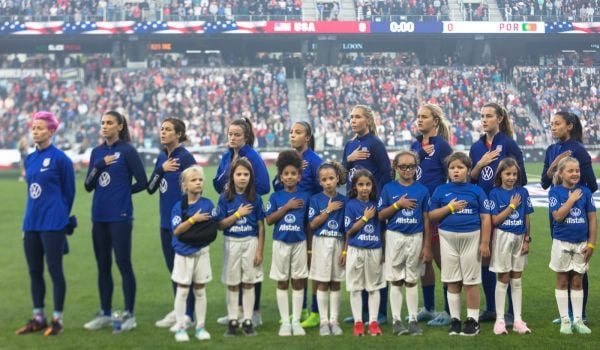Two years ago, Maimunah Mohd Sharif was plucked from her perch as mayor of Penang Island, Malaysia, to become the Executive Director of UN-Habitat. From managing a scenic municipality of 700,000 home to a UNESCO World Heritage Site — the historic city of George Town — she was thrust into the limelight of overseeing a sprawling portfolio of projects around the world. From helping war-torn Kabul rebuild its parks to ensuring African cities can weather natural disasters to planning new types of refugee settlements that can evolve into cities, UN-Habitat’s work on the ground helps support urban life in some of the world’s most disadvantaged places.
Next City sat down with Sharif to find out what she has learned in her first two years on the job. This interview has been edited for length and clarity.
What are the top issues facing cities in this new decade and how do they differ from the urban priorities of the 2010s?
The climate emergency, inequality and forced migration. There was always a lot of concern about climate change — flooding, landslides. Now what we have is a climate crisis, or a climate emergency. This is one of the areas that will affect cities more than anywhere else, because by 2050, around two-thirds of people will live in the cities. The most marginalized will be poor people living in coastal areas affected by this climate crisis.
Second, there are inequalities, not only inequalities within countries, but also between regions, between countries, and between continents. These inequalities cause people to migrate, because people … see the greener pasture somewhere else. Sometimes they are forced to migrate, like climate refugees, but other times they are forced to move to change their quality of life. They believe that in moving from one place to another place, they will get a better job.
Do you think that cities are weathering the migration crisis well?
To a certain extent, cities have already taken action to integrate migrants into the host community. For example, Kalobeyei is a new type of refugee settlement in northern Kenya’s Turkana area. We innovated with the Turkana governors and worked together with the UN High Commission for Refugees and the International Organization for Migration to handle the influx of refugees into northern Kenya. We provided expertise on how to do the urban planning. I am hopeful because the governor is going to give a piece of land for us to plan in such a way that the refugees are integrated into the area.
This type of movement to integrate is happening because there has been a shift to looking at the migrant as a key to economic growth: migrants create employment. The role of mayors, local government, and local communities is very important to shift from the migrant as a negative to the migrant as a positive. Right now there is a backlash because of the volume. The volume is too big sometimes. The cities or the region cannot cope. They need help from international organizations and donors, and the local government needs help from the national government.
What concerns facing cities have you made into your signature issues thus far?
During World Habitat Day in October 2018, we launched the Waste Wise Cities Campaign, because my experience is that people are talking about waste management. It can be solid. It can be liquid. It can even be air pollution. Now we [are working] together with central and local government to create cleaner cities.
How successful has UN-Habitat been in promoting urban resilience?
I went to Beira, Mozambique, one month after Cyclone Idai hit in March 2019. I met the Prime Minister, the Minister of Housing and the Minister of Education. They asked me, “Executive Director, can we get more schools built according to your guidelines?” I responded, “I’m new. What do you mean, Minister?” They said, “Come, I’ll show you.” The rest of the buildings were all collapsed, except the school built using our design. It was still standing.
Public space has been a priority for UN-Habitat for many years. What public space initiatives have been most promising?
I went to Afghanistan, which has big challenges in peace and security, to see UN-Habitat’s Clean and Green Cities Programme to build public spaces. I officiated the opening of a park in Kabul. It’s a very big space in between high-rise affordable housing. Before, it was a rubbish dump site. And together with the government, donors, and the community, we created that park. At the inauguration, one girl ran down to hug and kiss me. She said that she was very happy because now after school she can come back and do her homework and meet her friends.
President Ashraf Ghani and his ministers have told me, “Please do more of these public spaces. Please help us to improve our planning, lift up our economic growth, and bring people together.”
Millions of people around the world lack formal title to their homes. What can be done?
In Afghanistan, we are giving thousands of land certificates to the people through our Global Land Tool Network. Importantly, both the name of the husband and the name of the wife will be on the property deed. If the husband has two wives, then both wives’ names will be there. That is gender fairness.
Our special correspondent Gregory Scruggs will be in Abu Dhabi to cover World Urban Forum 10, taking place February 8 through 13, 2020. To stay on top of the essential conversations and innovative solutions presented at WUF 10, sign up for Urban Planet, our global sustainability newsletter.

Gregory Scruggs is a Seattle-based independent journalist who writes about solutions for cities. He has covered major international forums on urbanization, climate change, and sustainable development where he has interviewed dozens of mayors and high-ranking officials in order to tell powerful stories about humanity’s urban future. He has reported at street level from more than two dozen countries on solutions to hot-button issues facing cities, from housing to transportation to civic engagement to social equity. In 2017, he won a United Nations Correspondents Association award for his coverage of global urbanization and the UN’s Habitat III summit on the future of cities. He is a member of the American Institute of Certified Planners.



_920_577_80.JPG)














